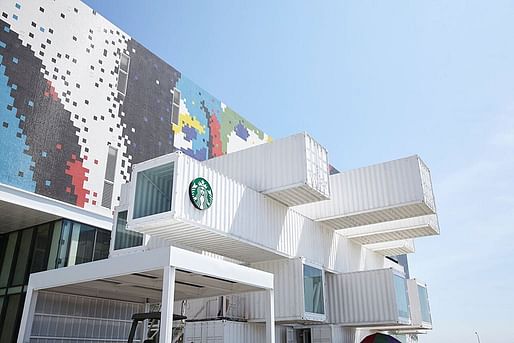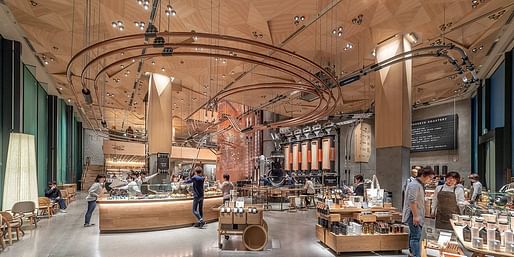

In the retail and commercial sectors, the architect’s brief is often driven by a need to offer flexible layouts to suit a variety of potential tenants. This emphasis on flexibility is for good reason, allowing a single unit to accommodate a wide portfolio of businesses without the need for expensive, environmentally damaging adaptions. However, an emphasis on standardized elements, from light and ventilation levels to waste, servicing, and delivery strategies, can also remove architects from the equally important and intriguing process of designing for a specific brand, with a unique customer experience.
Today, global retailers such as IKEA and Apple have become famous not only for their products, but for the manner in which those products are presented to potential customers. For IKEA, this means bringing customers on a choreographed journey through their showrooms, one which has even inspired viral hide-and-seek challenges. Apple, meanwhile, is famous for their collaborations with renowned architects like Foster + Partners for the design of their stores, which often seek to echo the timeless design of the products themselves.
For Starbucks, this attention to customer experience defines the internal layout of their stores. This can include positioning their coffee bars at the back of stores to lead visitors past varied seating options filled with happy customers, aided by carefully considered lighting and shelving, or designing their coffee counters to maximize the visual connection between customers and staff. This attention to the psychological power of design also "filters" through to the architecture of the stores themselves. This can include unorthodox projects such as Kengo Kuma’s design for a Starbucks store consisting of 29 shipping containers, or their ambition to create 10,000 eco-friendly stores by 2025.
For architects intrigued by the intersection between architecture and brand identities, Starbucks is currently seeking a store designer to join their team in Seattle, WA. Though based in Seattle, the role will in fact focus on the design of Starbucks stores in China. In addition to generating design strategies and documentation for their stores, the designer will be expected to study and adhere to regional guidelines on finishing palettes and design aesthetics. As with many companies, Starbucks is offering the role in a remote-working format until January 2022. More details on the position are available over on Archinect Jobs.

The store designer role at Starbucks is the latest example of internationally renowned brands seeking architects to create spatial environments that align with their product or brand experience. Last month, we highlighted a similar position available at Nike, which was seeking a global retail designer to help create the future of retail design. In July, meanwhile, we reported on the opening of the AMO-designed flagship for Virgil Abloh’s Off-White fashion brand. Also in the fashion sector, Brooklyn-based Almost Studio recently unveiled their design for a boutique store for emerging fashion designer Sandy Liang in Paris.
--
As part of Archinect's job highlights series, we recently showcased an opportunity to work as an Architectural Studio Director at Workbench, a Senior Architectural Model Maker at Gemmiti Model Art, and a Preservation Architect for AYON Studio.
Stay up to date with the latest job listings by following Archinect Job's Facebook, Twitter, and Architect Jobs Instagram for new job opportunities posted. Archinect's industry-leading job board publishes approximately 150 new opportunities every week.
3 Comments
Exactly what is 'eco friendly' about rushing to create 10,000 new Starbucks stores in three years?
The "timeless design" of Apple products (and by association their architectural branding) is simply marketing, amplified by this article.
"Customer experience" is design to maximize sales, and like advertising is intentionally deceptive and manipulative.
Many of the young people I know understand this act accordingly.
Is Starbucks really planning more stores while the Chinese economy is collapsing, anti-American propaganda is increasing, and non-Chinese companies are shutting plants and moving out of China as fast as they can?
Stupid.
Yeah, what kind of idiot would peddle an addictive and popular product to over a billion people. That's no way to succeed.
Block this user
Are you sure you want to block this user and hide all related comments throughout the site?
Archinect
This is your first comment on Archinect. Your comment will be visible once approved.